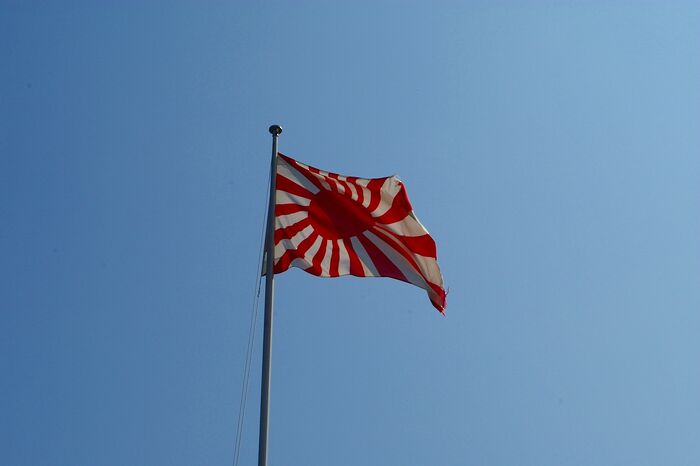Royal Marriage in Japan: More Grimm than Fairy Tale
The royal family represent the sexism deeply entrenched in Japanese society

The recent announcement of the engagement of Princess Mako, granddaughter of the current Emperor Akihito, to a commoner has elicited reactions of romanticism and giddy excitement from news outlets and magazines around the world. Her decision to pursue the marriage despite the fact that she would have to abandon her royal status has been labelled as something from a “fairy tale”- a dreamy gesture in the pursuit of love.
In a world where tabloids and gossip magazines pounce on the merest mention of “royal wedding” or any such starry-eyed romanticism, Princess Mako’s engagement is similarly being treated as such. Yet the discrimination that it represents, which is only the tip of the inequality iceberg for women in Japan, is being carefully ignored.
The romanticism of Princess Mako’s sacrifice for love is somewhat undermined when we consider that, were she a man, she wouldn’t have to make such a choice between royalty and love, as the law only forces female members of the royal family to renounce their status. While much of the material I have seen highlights the fact that Princess Mako’s Aunt, the former Princess Sayako, was the first royal to denounce her status for marriage, little attention has been paid to the fact that the current Empress of Japan, Michiko, wife of Akihito, is also a commoner.
Indeed, when their engagement ceremony took place in 1959 it was precisely because she was a commoner that it was so romanticised- the media gilding their stories with tales of how they had met while playing tennis, just to emphasise how far the imperial institution had progressed since the days less than two decades earlier when the Emperor was still revered as being descended from the heavens.
“Japanese women have been distorted to fit stereotypes”
And here in lies one of the fundamental issues with the presentation of Japanese women in domestic and international media. Japanese women have continuously been represented as flat, two-dimensional non-entities in a manner that fails to display their fundamental humanity, let alone their accomplishments and abilities. In terms of global representation, Japanese women have been distorted to fit three stereotypes: the cutesy, childlike females of manga and anime, the sexualised, submissive schoolgirl and the mysterious, exotic, and servile geisha.
Within Japan, women have frequently been similarly summarised within simplistic genres, most notably in modern times with the slogan “ryōsai kenbo” or “good wife, wise mother”, coined in 1875 and rising to prominence in the 19th and 20th century pursuit of modernisation and imperialism. Even today, women are essentially discouraged from pursuing professional careers by generous government tax breaks given to households with a single primary earner. Indeed, even simplistic legal requirements for marriage such as that a married couple must have the same surname (almost always taking the man’s), undermine the status of women in Japan, and demonstrate the archaic status of married women.
“Imperial sexism is a symptom of a wider social inequality.”
Looking at the statistics for long-term employment, the types of jobs worked by these women and the wages they earn, it would appear that Japanese women are less qualified than their male counterparts. In reality, however, in both the Imperial family and the general public this could not be further from the truth. The current Empress Michiko took courses at both Harvard and Oxford, a trend continued by the wife of the current heir Naruhito, who has studied at Harvard, Oxford and Tokyo University, the elite universities of three different countries.
This high level of education is not the sole property of the imperial household, however, as in 2012 46% of female high school students went on to attend an undergraduate level of university education. Women are equally as qualified, if not often more qualified, than men, yet they remain consistently underrepresented in professional industries.
Politically, however, recent events appear to indicate something of a renaissance in female politics. While in the national legislature female presence remains dismally unrepresentative in both chambers of the National Diet, the election of Renhō Murata to the leadership of the main opposition party, the Democratic Party of Japan, and the election of Yuriko Koike as Governor of Tokyo suggests that increasingly women are coming into positions of political influence. While there is still much to be done to achieve equality in political representation, recent developments present a positive potential for future developments.
Yet fundamentally, we should not see Princess Mako’s decision to renounce her royal status as a romantic gesture, or a sacrifice for love reminiscent of a fairy tale. It is an outdated practice that highlights how out of step with modern concepts of equality Japan is. Sexist inheritance practice was given a new lease of life in the imperial family with the birth of a male heir in 2006, preventing the reform towards a more egalitarian inheritance policy. This Imperial sexism is a symptom of a wider social inequality. Japan is facing a demographic crisis, with a record low birth rate, yet is this really a surprise when women in Japan are being confronted with the dichotomic choice of a career or a family?
Princess Mako’s abdication from her royal status should not be fetishised as a romantic gesture nor a “fairy tale” engagement. It should be used as an opportunity to discuss the wider social challenges and inequality that women in Japan face, and other reactions fundamentally fail to recognize the injustice that underpins this engagement
 News / Cambridge academics stand out in King’s 2026 Honours List2 January 2026
News / Cambridge academics stand out in King’s 2026 Honours List2 January 2026 Comment / Plastic pubs: the problem with Cambridge alehouses 5 January 2026
Comment / Plastic pubs: the problem with Cambridge alehouses 5 January 2026 News / Cambridge businesses concerned infrastructure delays will hurt growth5 January 2026
News / Cambridge businesses concerned infrastructure delays will hurt growth5 January 2026 News / AstraZeneca sues for £32 million over faulty construction at Cambridge Campus31 December 2025
News / AstraZeneca sues for £32 million over faulty construction at Cambridge Campus31 December 2025 Interviews / You don’t need to peak at Cambridge, says Robin Harding31 December 2025
Interviews / You don’t need to peak at Cambridge, says Robin Harding31 December 2025










